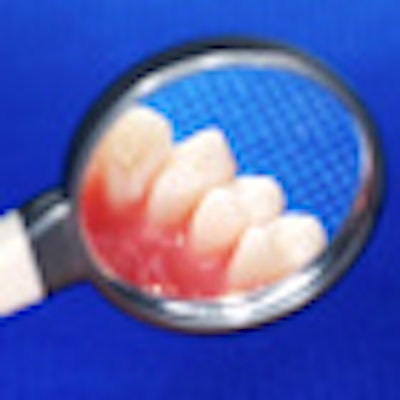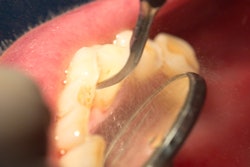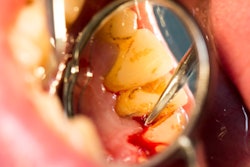
Psoriasis patients typically experience a decreased quality of life and may have a higher risk of diabetes and heart disease. Is their oral health at risk too?
Some recent studies have examined the link between psoriasis and oral health and found a connection (Acta Odontologica Scandinavica, May 2010, Vol. 68:3: 165-170; Dermatology Times, September 1, 2011). But a new study that included individuals with psoriasis and control subjects has found no difference in the risk of dental caries and periodontal disease between the two groups (Journal of Periodontology, May 25, 2012).
The available evidence, mainly in the form of case reports, suggests that individuals with psoriasis present with severe forms of periodontal disease at specific time points when the psoriasis condition is in an active state, explained study author Hani Fadel, BDS, from the division of periodontology at Taibah University. These periodontal findings at specific time points are known as "periodontal bursts."
Also, the evidence shows that individuals with psoriasis, particularly psoriasis arthritis, have demonstrated compromised salivary function, which in turn may lead to a higher risk of future dental caries, Dr. Fadel added.
"From a personal experience point of view, my superiors have observed in more than one clinical occasion severe periodontal conditions in psoriasis patients," he said.
Lower salivary pH
The study authors looked at 89 individuals with mild to moderate chronic plaque psoriasis and 54 participants without psoriasis, all recruited at the University Hospital in Gothenburg. Psoriasis arthritis was diagnosed in 25 of the patients with psoriasis. All participants were older than age 40. The recruitment of study participants took place continuously from the autumn of 2008 and to the end of 2010.
“My superiors have observed ... severe periodontal conditions in psoriasis patients.”
— Hani Fadel, BDS
All study participants were first examined by a dermatologist. In the case of those with psoriasis, the dermatologist determined the type and severity of the psoriasis condition and the age of psoriasis onset. Individuals with psoriasis were also examined by a rheumatologist.
All participants were then interviewed by a periodontologist. Oral radiographic examination, salivary sampling, and recording of oral hygiene, periodontal, and caries status also were performed. Two computer applications were used for illustration of oral disease risk profiles.
The individuals with psoriasis had lower salivary pH, fewer remaining teeth, fewer sites with probing pocket depth of 4 mm or less, and a lower radiographic alveolar bone level than those without psoriasis (p < 0.05), the researchers found. In addition, these differences -- except for alveolar bone level -- remained significant after controlling for possible confounders.
The researchers found that 24% of the individuals with psoriasis and 13% of those without the condition belonged to the moderate to severe periodontitis categories (p > 0.05), while the remaining cases had either gingivitis or previous or mild periodontitis.
Individuals with psoriasis arthritis exhibited a lower stimulated salivary secretion rate than those without psoriasis. No significant differences were observed between the two groups with regard to any of the caries risk categories.
The authors noted that individuals with psoriasis had fewer remaining teeth, but they could not identify the exact reason for tooth loss, and also that the reduced salivary pH in patients with psoriasis and reduced salivary secretion in psoriasis arthritis individuals may pose a risk for future caries.
"There were no differences in profiles of caries and periodontal disease experience and risk between individuals with and without psoriasis," the authors concluded.
Study limitations
Based on the available evidence, these results weren't quite what the researchers had expected, Dr. Fadel said. However, some of the data coincides with what was previously reported; for example, psoriasis individuals had a lower alveolar bone level as shown on radiographs and fewer teeth.
"These findings may indicate a more severe history of periodontal disease in psoriatics," he said.
The study is unique since it is a case-control design, while the available evidence is mostly in the form of case reports, he added. The case-control design facilitates a more clear comparison between individuals with and without psoriasis in terms of oral health.
However, because the study is cross-sectional in nature, it only reflects the oral status at a specific time point, and the psoriasis patients included were treated and had mild to moderate disease severity.
"We assume that more severe oral findings may have been observed in more severe, untreated psoriasis cases," Dr. Fadel concluded.



















